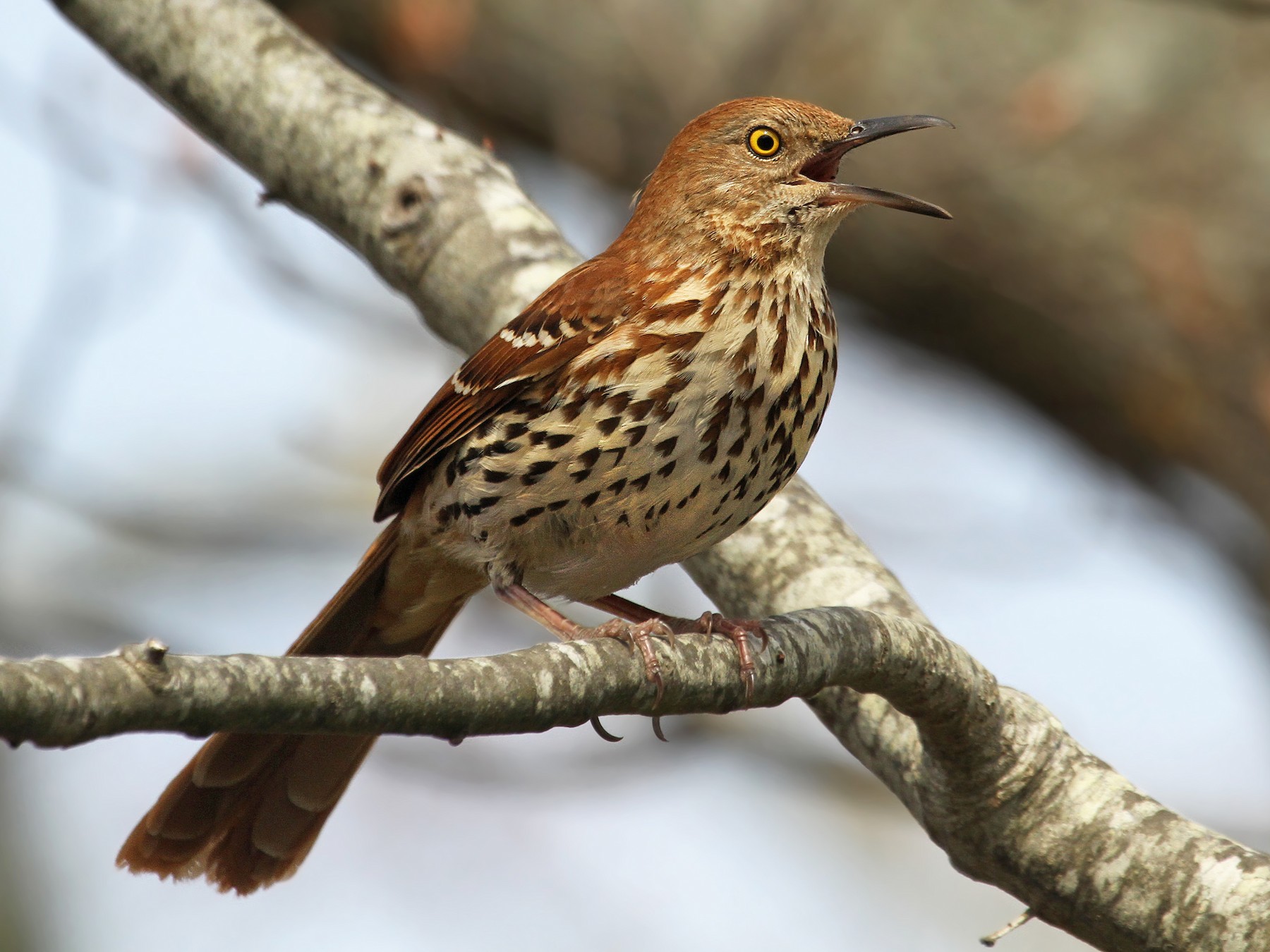Identifying little brown birds, also known as LBJs, can be challenging because they lack distinctive features commonly found in their more vibrant counterparts.
However, fret not, as this comprehensive guide aims to assist you in recognizing various brown birds, including sparrows, wrens, and others, that you may encounter. Additionally, it provides information about the seasonal presence of brown birds in Arkansas.
This informative guide presents a list of brown birds commonly observed in Arkansas, categorized by the season. The birds are ranked based on their frequency of appearance, according to checklists submitted by avid birdwatchers on ebird.
Table of Contents
Overview of Brown Birds in Arkansas by Season
Year-round Brown Birds in Arkansas: Northern Cardinal, Carolina Wren, Mourning Dove, American Robin, House Finch, House Sparrow, Brown Thrasher, Eastern Phoebe, Chipping Sparrow, Eastern Towhee, Field Sparrow, Bewick’s Wren
Summer Brown Birds in Arkansas: Brown-headed Cowbird, Great Crested Flycatcher, Common Yellowthroat, Wood Thrush, Louisiana Waterthrush
Winter Brown Birds in Arkansas: White-throated Sparrow, American Goldfinch, Northern Flicker, Song Sparrow, Cedar Waxwing, Savannah Sparrow, White-crowned Sparrow, Pine Siskin, Swamp Sparrow, Brown Creeper, Purple Finch, Hermit Thrush, Winter Wren, Spotted Towhee, American Tree Sparrow
Brown Birds During Migration in Arkansas: Rose-breasted Grosbeak, Swainson’s Thrush, House Wren, Marsh Wren, Northern Waterthrush
A Total of 30 Brown Birds in Arkansas
1. Female Northern Cardinal
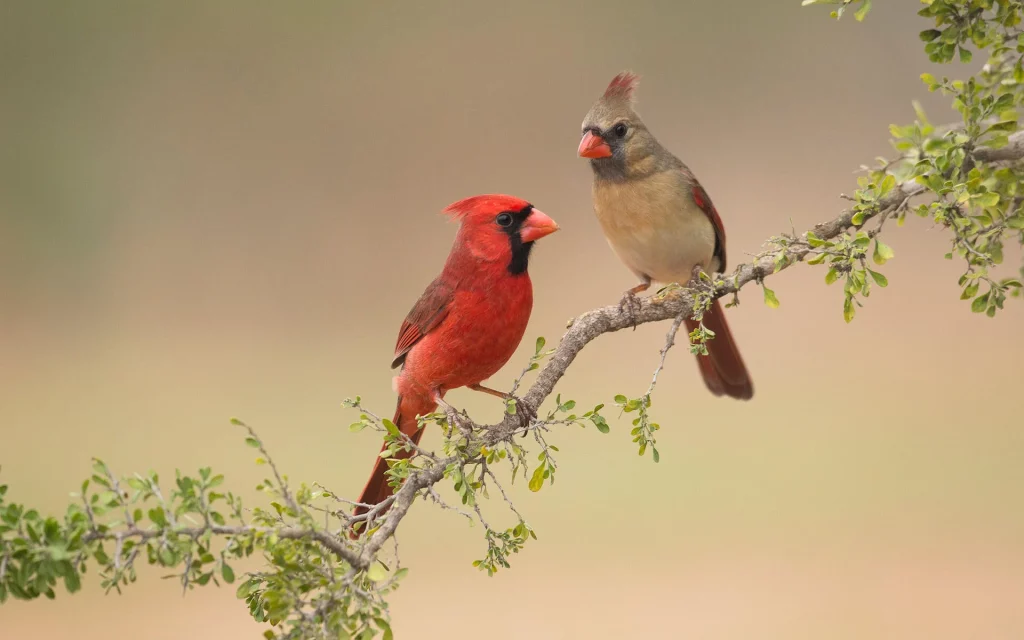
To identify the female Northern Cardinal, note its reddish highlights, red beak, and sharp brown crest. While not as flashy as the male counterpart, the female exhibits a distinctive brown coloration. These cardinals are residents of Arkansas throughout the year and are frequently sighted, appearing in 67% of summer checklists and 59% of winter checklists submitted by birdwatchers.
2. Carolina Wren
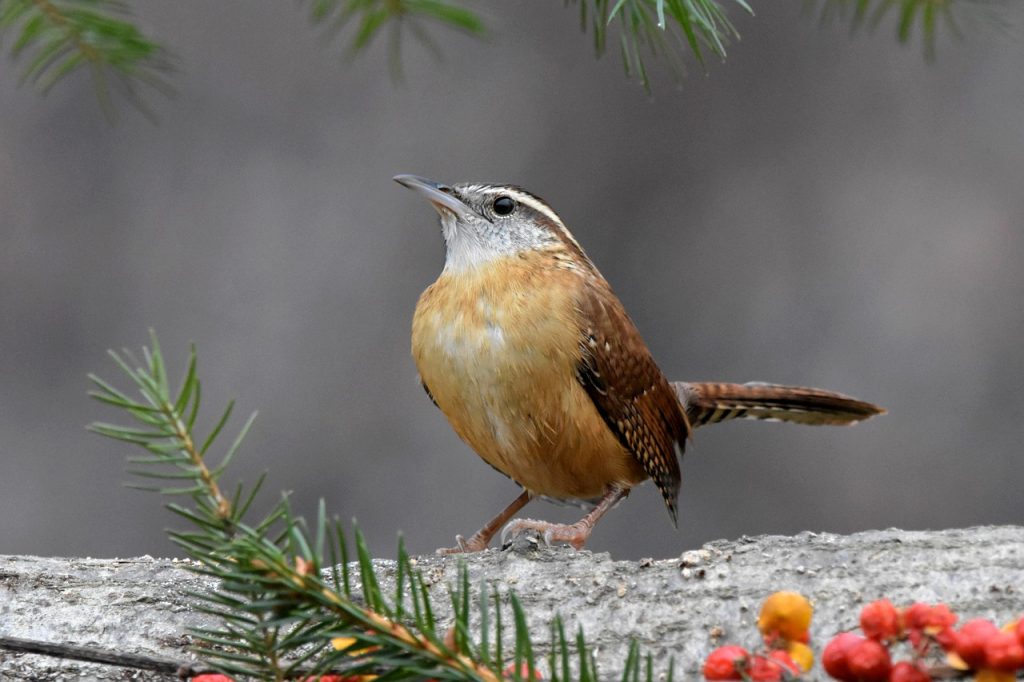
The Carolina Wren is a year-round resident of Arkansas and is seen in 41% of summer checklists and 38% of winter checklists. Recognizable by its dark brown top and light brown underbelly, this wren possesses a white eyebrow stripe and emits a melodious “teakettle” song. Carolina Wrens are found in woods, dense vegetation, and often visit backyard feeders.
3. Mourning Dove
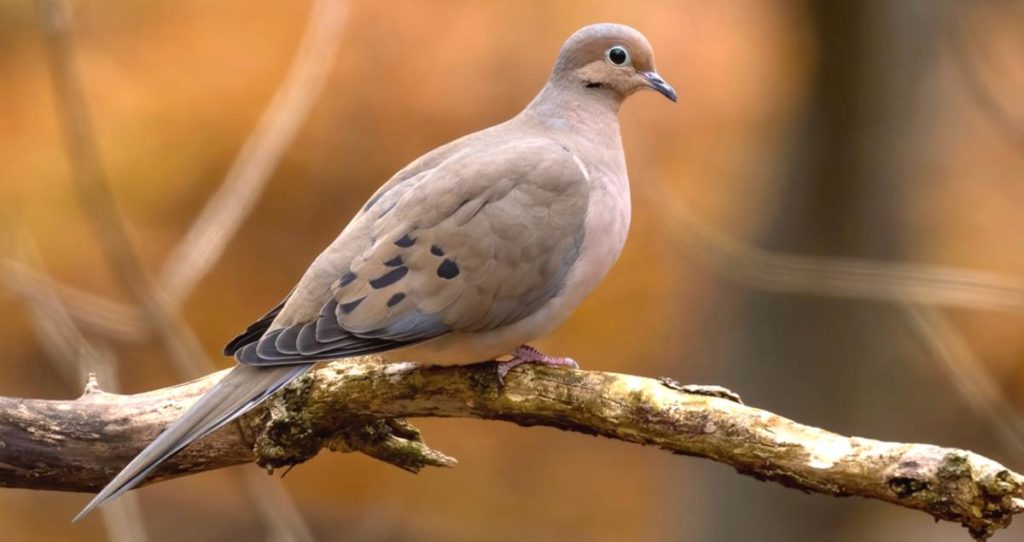
Mourning Doves can be spotted all year in Arkansas, with their numbers increasing from April to September. They appear in 46% of summer checklists and 30% of winter checklists. These graceful birds have plump bodies, long tails, and sport a soft brown color with black wing spots. Male Mourning Doves are slightly heavier than females.
4. American Robin
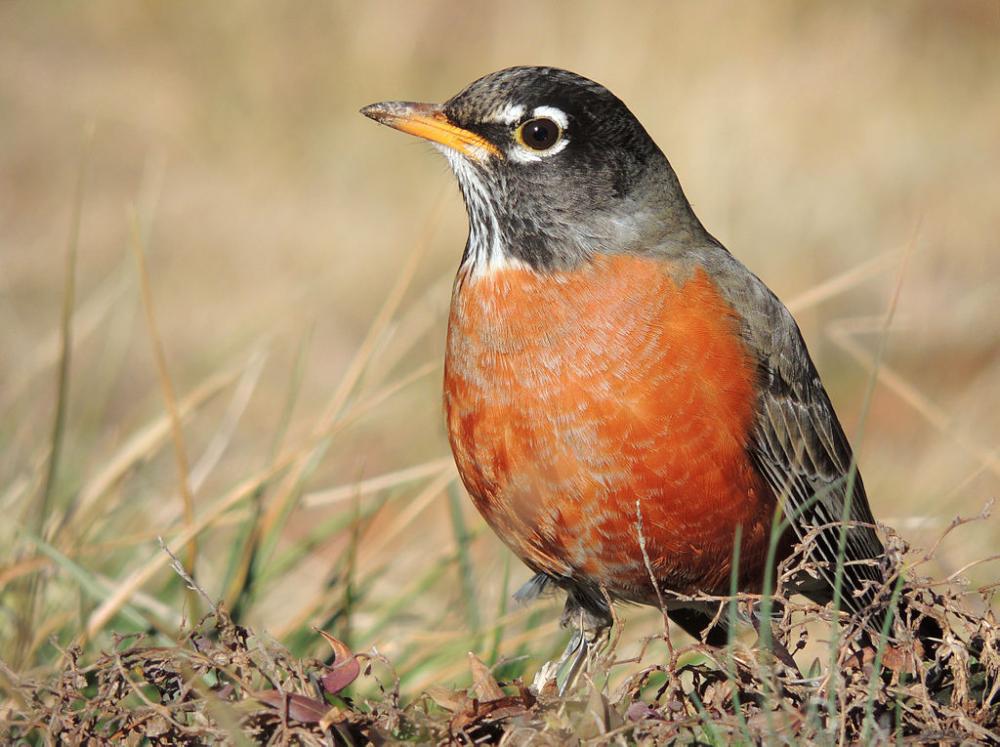
American Robins are present in Arkansas throughout the year, observed in 33% of summer checklists and 31% of winter checklists. They boast black heads and backs, with red or orange breasts. During winter, they tend to roost in trees, making them more visible in backyard settings come spring. American Robins can be found in a variety of habitats and consume earthworms, insects, snails, and fruit.
5. White-throated Sparrow
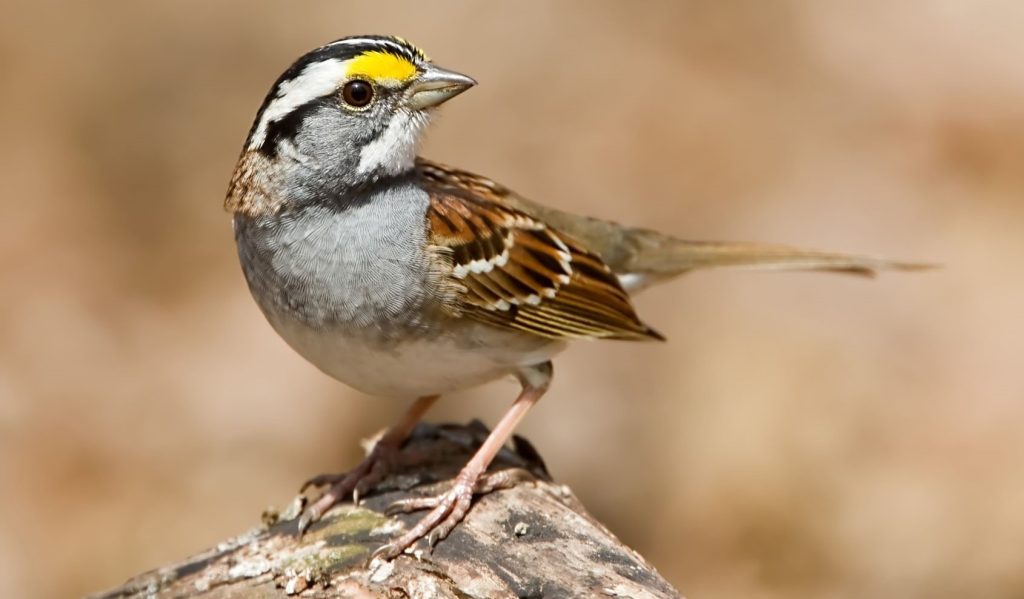
White-throated Sparrows frequently appear in Arkansas during winter, featuring in 45% of winter checklists submitted by birdwatchers. These sparrows have distinct black and white striped heads, with a bright white throat and yellow patches near their eyes. Their backs are brown, while their undersides are gray. White-throated Sparrows primarily breed in Canada and migrate south for the winter, favoring forested areas and wooded edges.
6. Female American Goldfinch
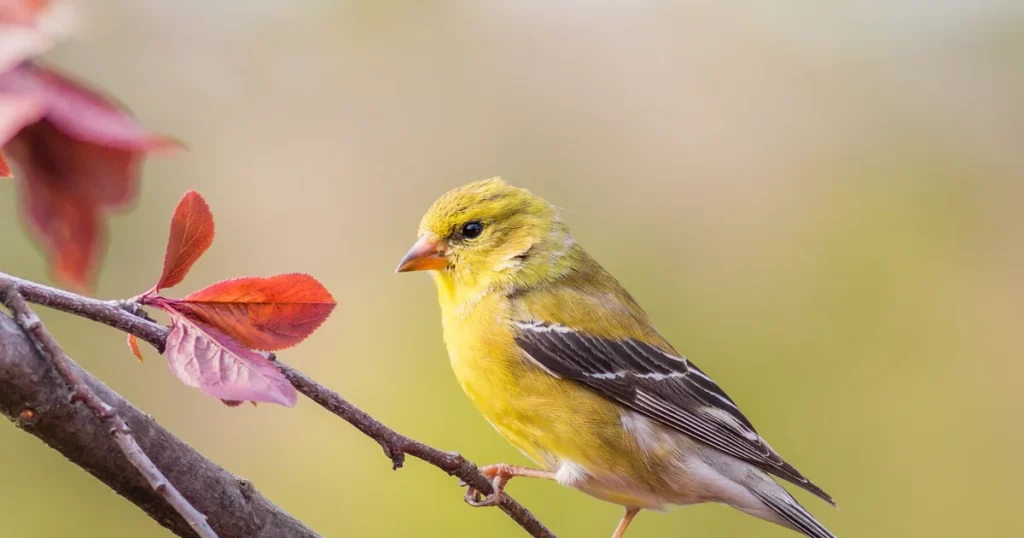
American Goldfinches are most commonly seen during winter in southern Arkansas, while some individuals remain year-round in the north of the state. They are recorded in 15% of summer checklists and 33% of winter checklists. Male American Goldfinches sport vibrant yellow and black plumage during the spring, while females have a more subdued brown appearance. These finches inhabit various regions of North America and are often found in weedy fields, overgrown areas, suburbs, parks, and backyards.
7. Female House Finch
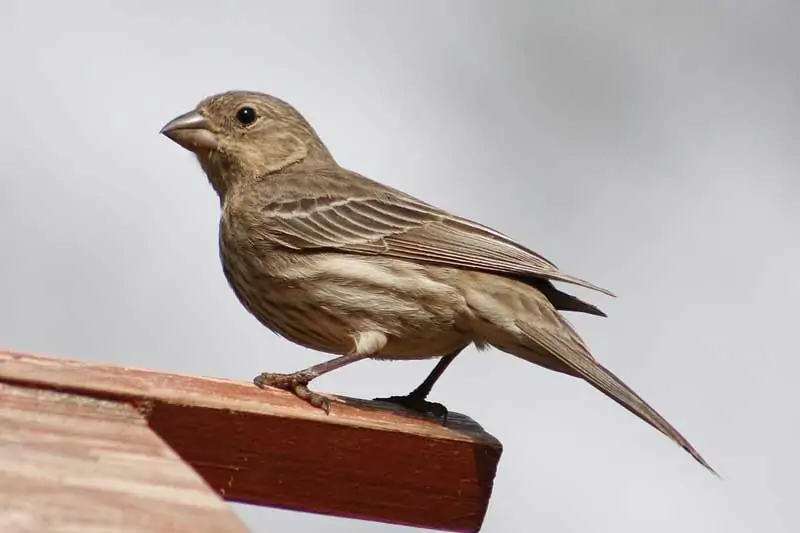
House Finches are year-round residents of Arkansas, observed in 21% of summer and winter checklists. Female House Finches feature brown-streaked plumage, while males possess red heads and breasts, with the rest of their bodies predominantly brown-streaked. Originally found in western US states, House Finches have successfully expanded their range to eastern states, outcompeting Purple Finches. They can be spotted in parks, farms, forest edges, and backyard feeders.
8. House Sparrow
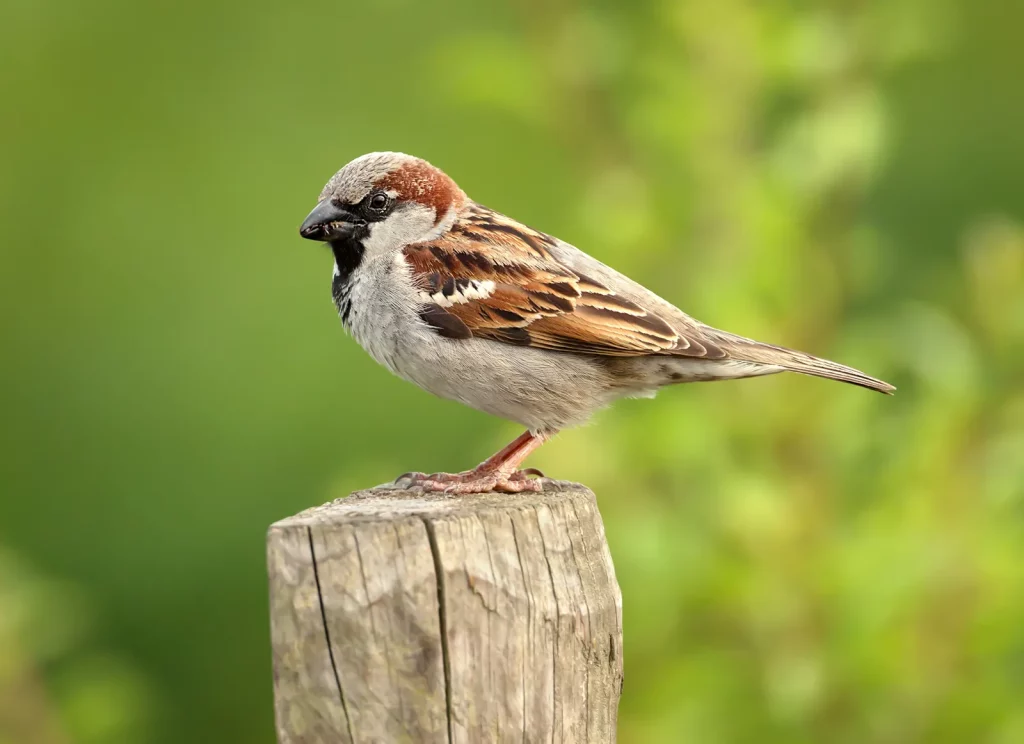
House Sparrows, introduced species in Arkansas, can be seen throughout the year. They occur in 21% of summer checklists and 15% of winter checklists. House Sparrows have gray and brown heads, white cheeks, black and brown backs, and gray bellies. While considered non-native and often regarded as pests due to their impact on native species, House Sparrows are commonly found near human dwellings and feed on grains, seeds, and discarded food.
9. Northern Flicker
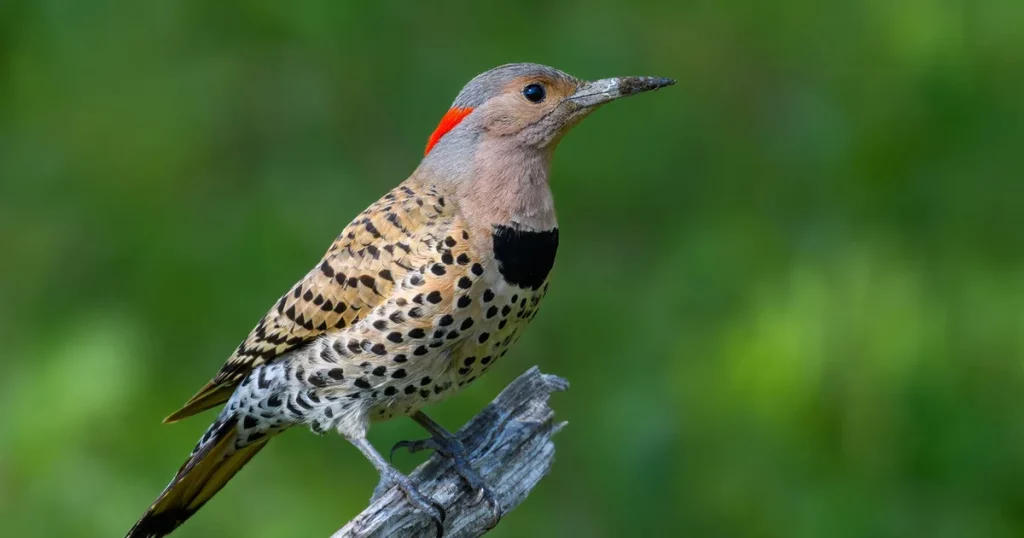
Northern Flickers are year-round inhabitants of Arkansas, with higher abundance during winter when migratory birds arrive from northern breeding grounds. They appear in 8% of summer checklists and 22% of winter checklists. These large brown woodpeckers boast black spots and a white rump patch visible during flight. Northern Flickers exhibit red or yellow flashes in their wings and tail feathers, depending on their regional origin.
10. Female Brown-headed Cowbird
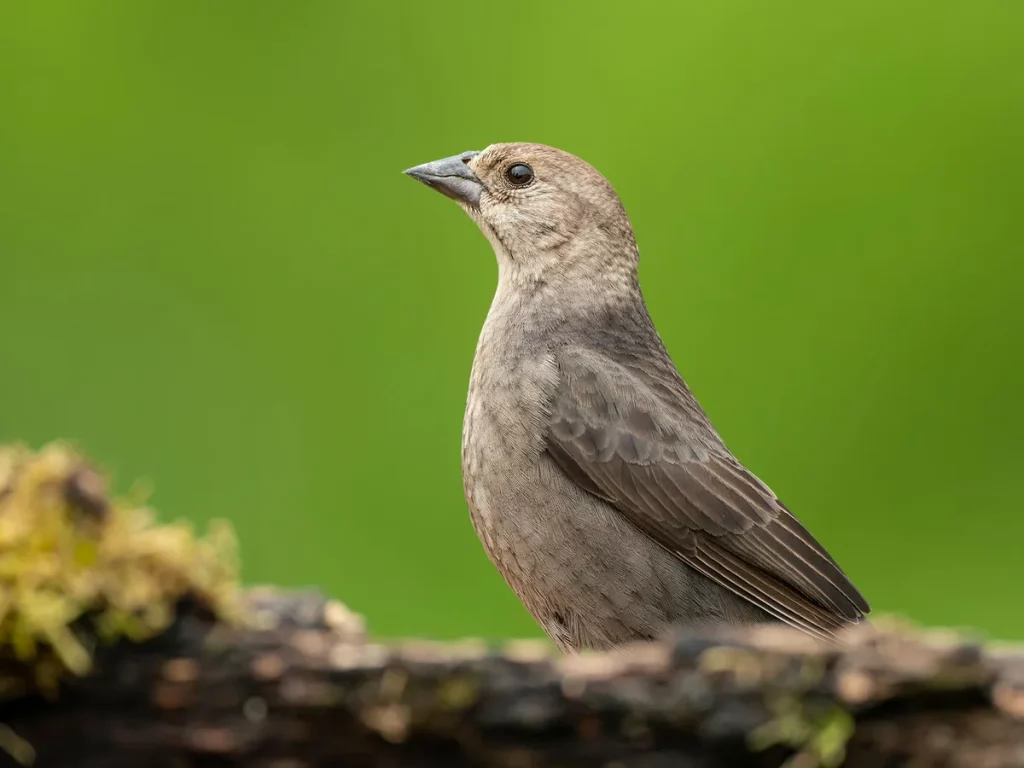
Brown-headed Cowbirds are frequently spotted in Arkansas from March to July, appearing in 28% of checklists during this period. While some individuals remain year-round, they are more prevalent during the summer months and make up 3% of winter checklists. Female Brown-headed Cowbirds exhibit brown plumage with subtle streaks, while males are larger, possessing black bodies, brown heads, and short tails. Brown-headed Cowbirds are widespread in eastern and southern US states and the Pacific Coast.
11. Brown Thrasher
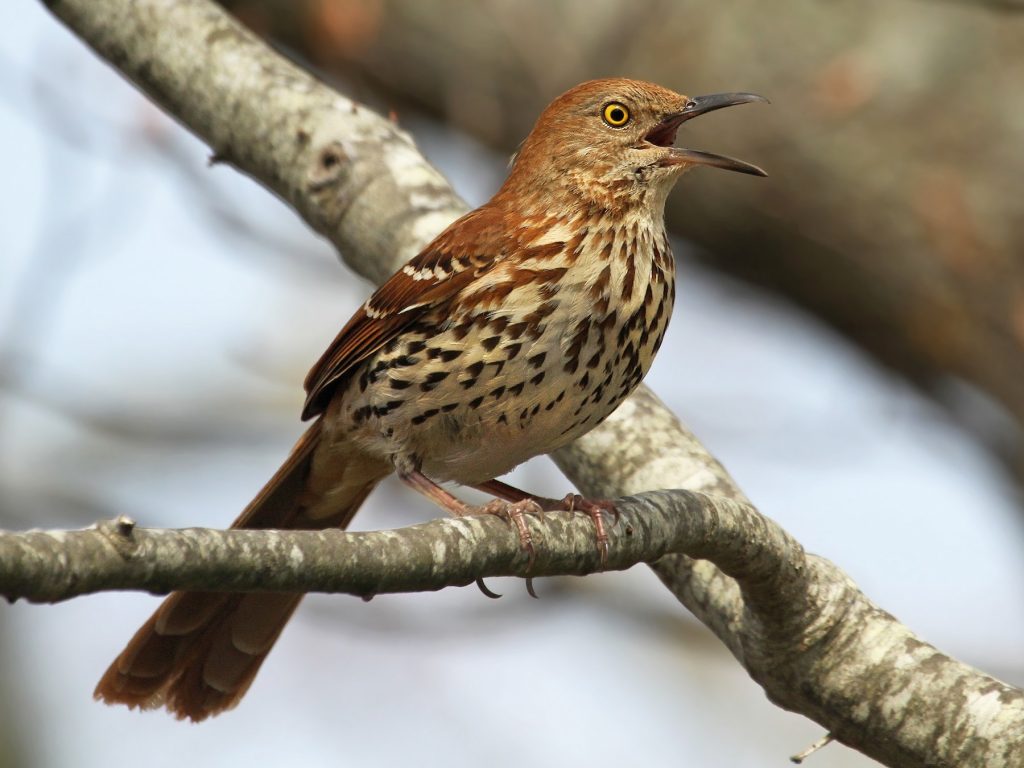
Brown Thrashers can be seen in Arkansas all year, with higher numbers observed from March to October. They occur in 20% of summer checklists and 7% of winter checklists. These large songbirds resemble robins in size and exhibit brown backs, white-streaked chests and bellies, and gray faces with vibrant yellow eyes. Brown Thrashers spend most of their time in thickets and shrubbery, rummaging through the leaf litter and soil in search of insects and berries.
12. Eastern Phoebe

Eastern Phoebes are present in Arkansas year-round, appearing in 15% of summer checklists and 8% of winter checklists. These plump songbirds sport grayish-brown backs, whitish undersides, and slightly darker heads. Eastern Phoebes are migratory, breeding across northeastern and central US states, then migrating to southeastern US states and Mexico for winter. They can be found perched in woodlands, waiting to catch flying insects.
13. Chipping Sparrow
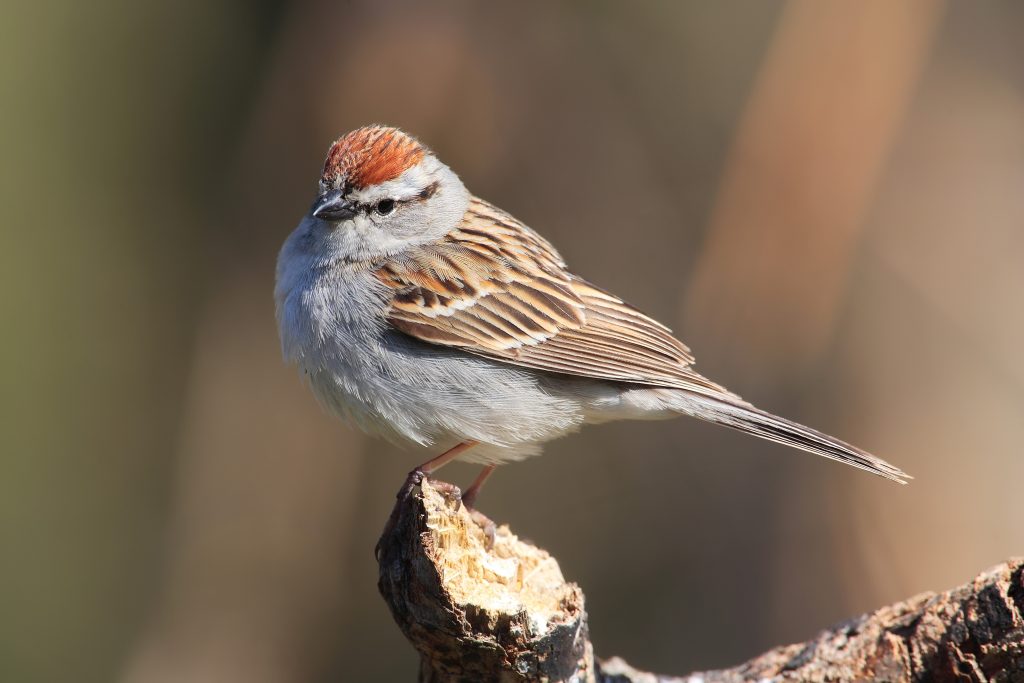
Chipping Sparrows can be spotted in Arkansas all year, featuring in 12% of summer checklists and 5% of winter checklists. These small, slender birds possess brown and black-streaked backs, gray undersides, rusty crowns, black eye lines, and pink bills. Chipping Sparrows breed in the US and Canada, migrating to Mexico and Florida for winter. They often gather in small flocks and forage on open ground, including backyard feeders.
14. Song Sparrow
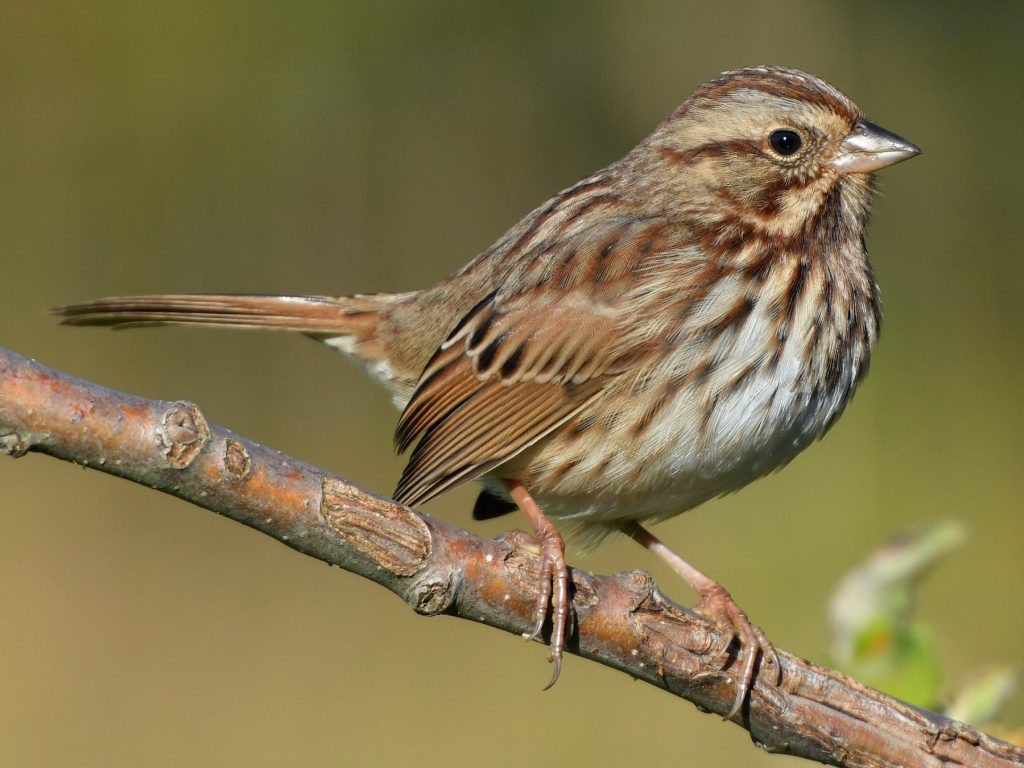
Song Sparrows are primarily winter birds in Arkansas, arriving as early as September and staying until July, with peak observations occurring from October to April. They are recorded in 16% of winter checklists. Song Sparrows may lack the striking appearance of other backyard birds, but their continuous singing during the breeding season sets them apart. They exhibit brown-streaked plumage and can be found in open, shrubby, and wet areas, as well as visiting backyard feeders.
15. Eastern Towhee
Eastern Towhees are year-round residents of Arkansas, appearing in 7% of summer and winter checklists. These striking sparrows, about the size of a robin, feature black heads, throats, and backs, reddish sides, long tails, and white bellies in males. Females are similar but brown instead of black. Eastern Towhees reside in southeastern US states year-round, while northern breeders migrate south for winter. They can be found in thickets, forests, and woodland edges.
16. Great Crested Flycatcher
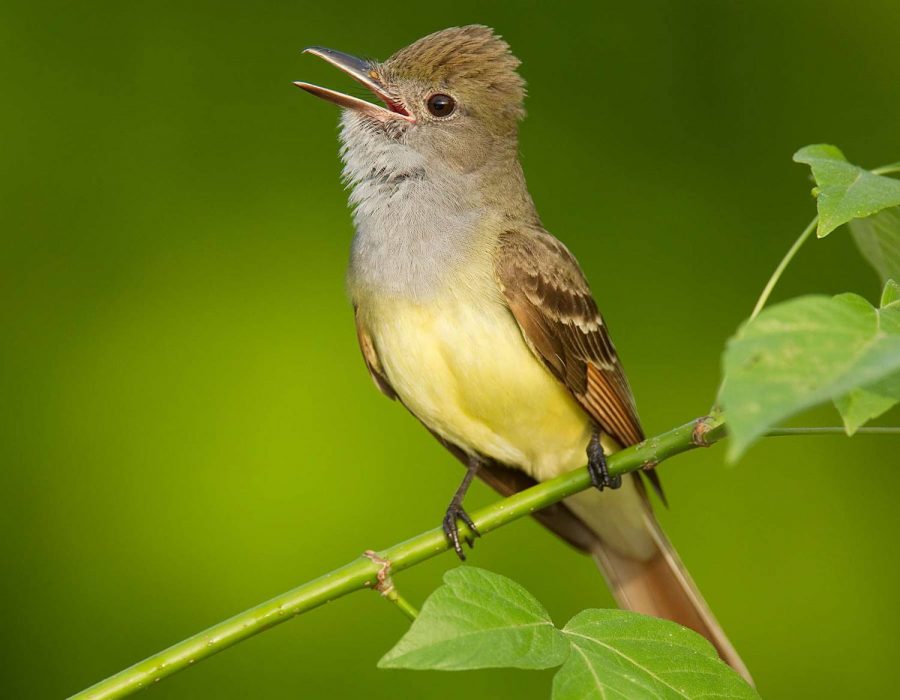
Great Crested Flycatchers breed in Arkansas from April to October, appearing in 20% of summer checklists. These birds display brown backs, yellow bellies, gray throats, and reddish flashes in their wings and tails. The crest on their heads is not very pronounced. Great Crested Flycatchers breed across much of eastern North America and spend winter in southern Florida, Mexico, and Central America. They often perch in woodlands, clearings, and tree-lined neighborhoods, waiting to catch large insects in flight.
17. Cedar Waxwing
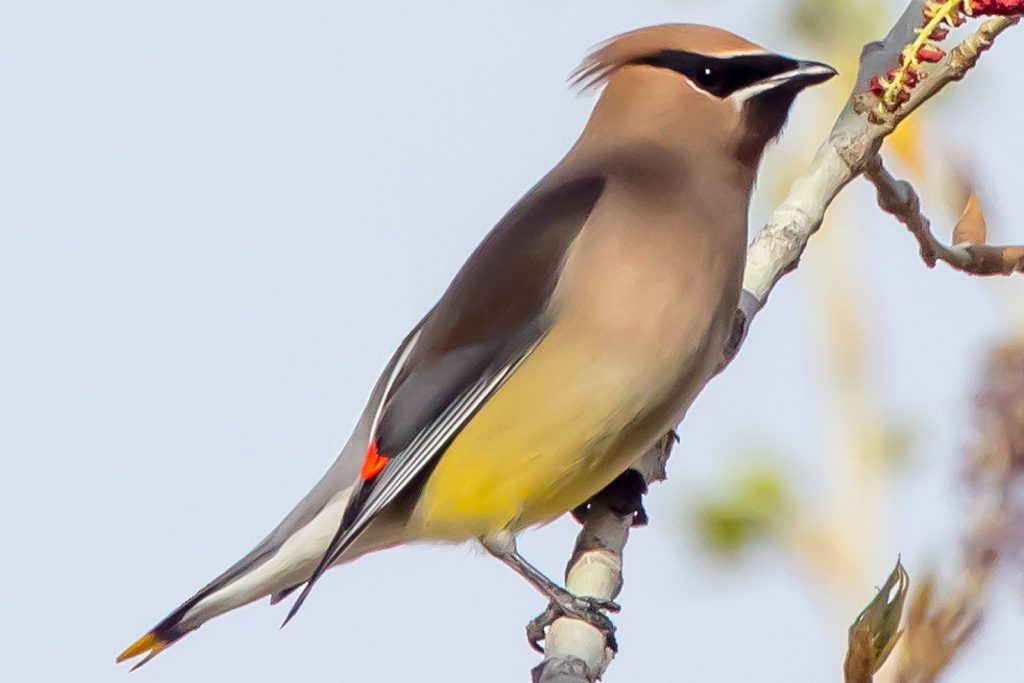
Cedar Waxwings are predominantly observed in Arkansas during winter, from September to May, appearing in 8% of checklists during this time. These elegant social birds showcase pale brown heads, chests, and crests that transition to gray on their backs, wings, and tails. Their bellies are pale yellow, becoming bright yellow near the tail. Cedar Waxwings possess a narrow black mask over their eyes and exhibit bright red wingtips.
18. Field Sparrow
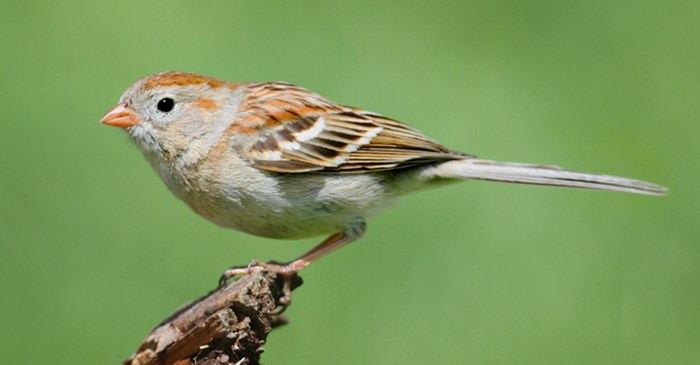
Field Sparrows are present in Arkansas throughout the year, occurring in up to 6% of summer and winter checklists. These small, slender birds exhibit brown-backed plumage streaked with black, gray undersides, and reddish crowns. Field Sparrows remain year-round in eastern US states, while those breeding in the Midwest migrate south for winter. They are often found in abandoned fields, where they feed on weeds and seeds.
19. Common Yellowthroat
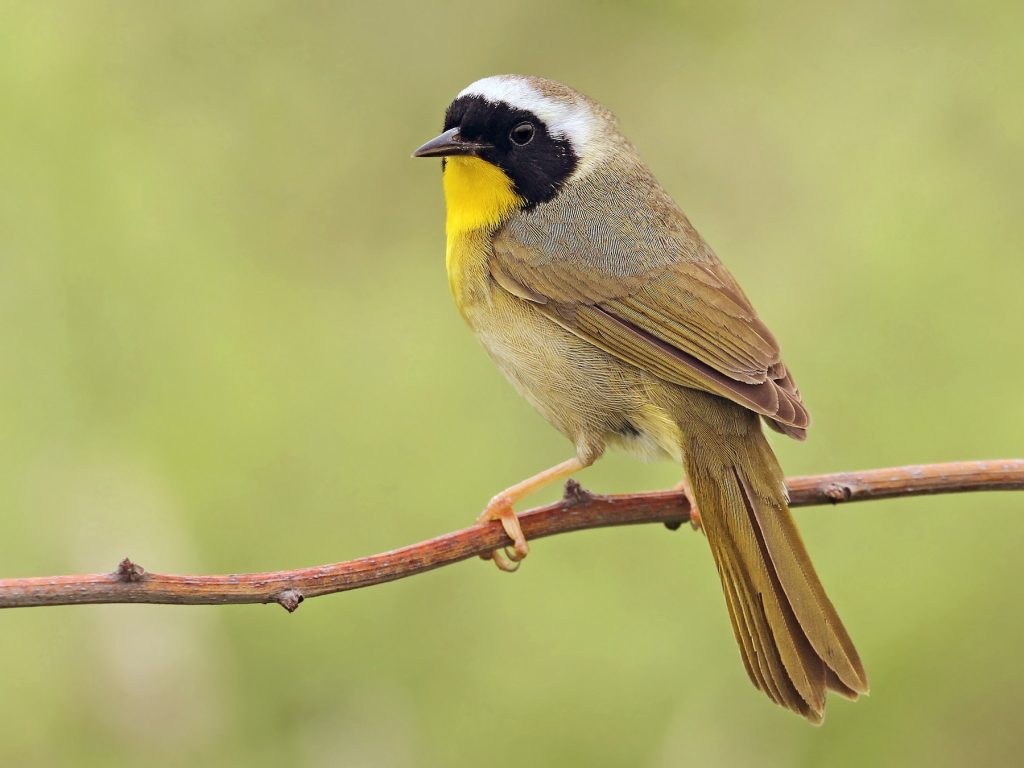
Common Yellowthroats are primarily seen in Arkansas during the breeding season, with a few individuals remaining year-round. They are most commonly observed from April to October, appearing in 13% of summer checklists. These small songbirds feature brownish backs, bright yellow undersides, and long tails. Male Common Yellowthroats possess black masks on their faces, though the intensity of their yellow coloration can vary geographically.
20. Savannah Sparrow

Savannah Sparrows spend the winter in Arkansas, making up 7% of checklists during this period. They begin arriving as early as September and may stay until July, with peak observations from October to May. Savannah Sparrows have a distinctive yellow patch near the eye and streaky brown plumage. They can be found foraging on the ground in grasslands, agricultural fields, marshes, and coastal areas.
21. Bewick’s Wren
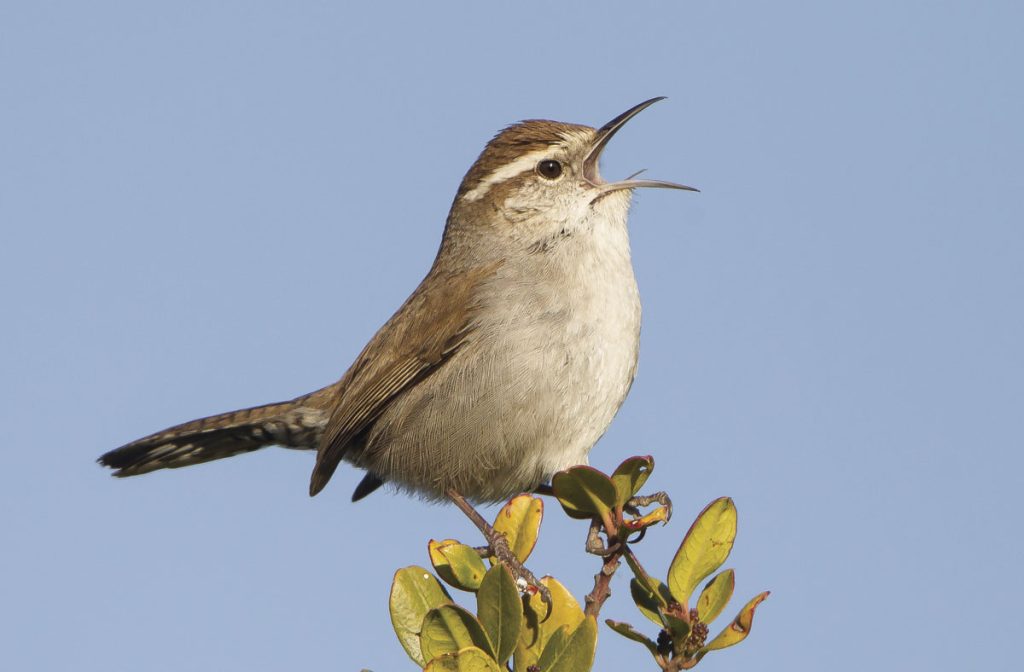
Bewick’s Wrens are year-round residents of Arkansas, appearing in up to 4% of summer and winter checklists. These small wrens have brown upperparts, light gray undersides, and pale eyebrows. Bewick’s Wrens are found in brushy areas, woodland edges, and shrubby habitats. They are known for their melodious and complex songs, often heard throughout the year in their preferred habitats.
22. White-crowned Sparrow
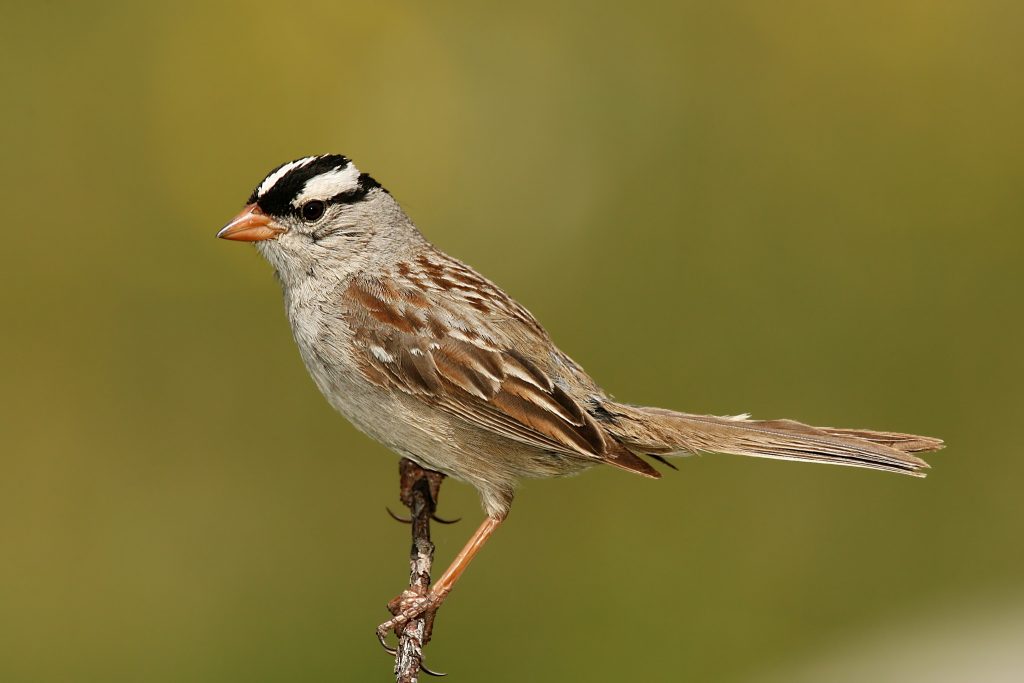
White-crowned Sparrows primarily spend the winter in Arkansas, appearing in 6% of winter checklists. They begin arriving as early as September and may stay until May. These sparrows exhibit a striking black and white-striped head pattern, with brown and gray plumage on their backs and wings. White-crowned Sparrows breed in the northern US and Canada, migrating south for winter. They can be found in weedy fields, grasslands, and gardens.
23. Pine Siskin

Pine Siskins are observed in Arkansas primarily during winter, from October to April, appearing in 6% of winter checklists. These small finches have brown and black-streaked plumage, with yellow patches on their wings and tails. Pine Siskins breed in coniferous forests across North America and may migrate erratically depending on food availability. They are often seen in mixed flocks, feeding on seeds from trees and shrubs.
24. Swamp Sparrow
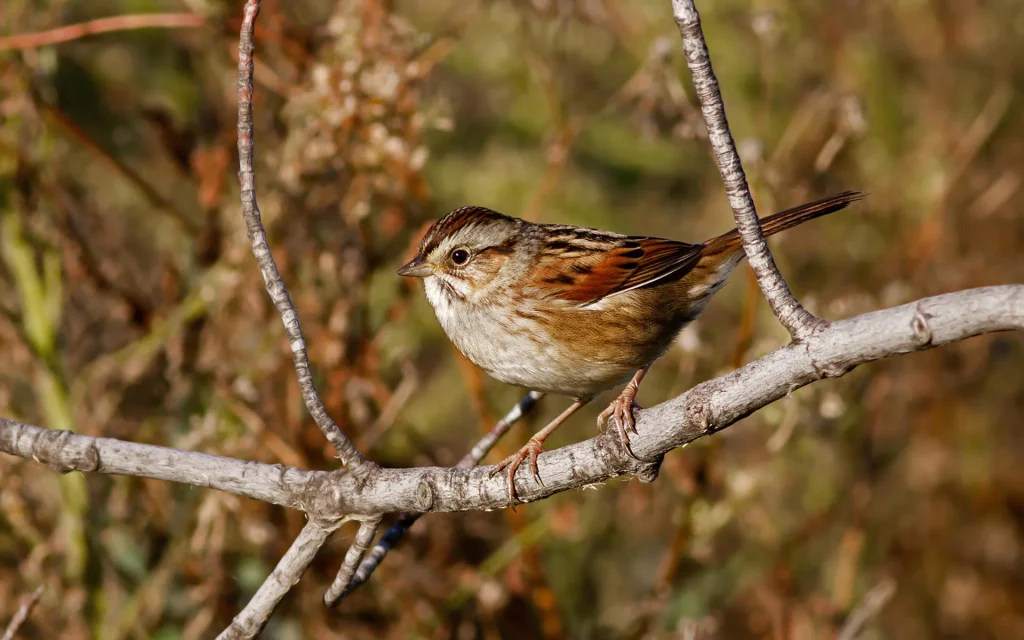
Swamp Sparrows primarily spend the winter in Arkansas, appearing in 5% of winter checklists. They begin arriving as early as September and may stay until May. These sparrows showcase reddish-brown backs, gray or brown breasts, and a distinctive reddish cap. Swamp Sparrows breed in the northern US and Canada, migrating to southern US states for winter. As their name suggests, they prefer wetland habitats, including marshes, swamps, and wet meadows.
25. Brown Creeper

Brown Creepers primarily spend the winter in Arkansas, appearing in 5% of winter checklists. They arrive as early as September and may stay until May. These small, slender birds have brown backs with intricate patterns and white undersides. Brown Creepers are often seen spiraling up tree trunks in search of insects, using their specialized curved bills and stiff tail feathers for support.
26. Purple Finch

Purple Finches are observed in Arkansas mainly during winter, from September to May, appearing in 5% of winter checklists. These finches display a mix of brown, red, and pink plumage, with males featuring brighter colors than females. Purple Finches breed in coniferous and mixed forests across Canada and parts of the US, migrating south for winter. They can be found in woodlands, forests, and suburban areas.
27. Wood Thrush

Wood Thrushes primarily breed in Arkansas from April to September, appearing in 4% of summer checklists. These medium-sized songbirds exhibit rich brown upperparts, white undersides heavily marked with dark spots, and distinctive white eye-rings. Wood Thrushes are known for their flute-like, melodious songs, which can be heard in deciduous and mixed forests. They migrate to Central America and Mexico for winter.
28. Louisiana Waterthrush
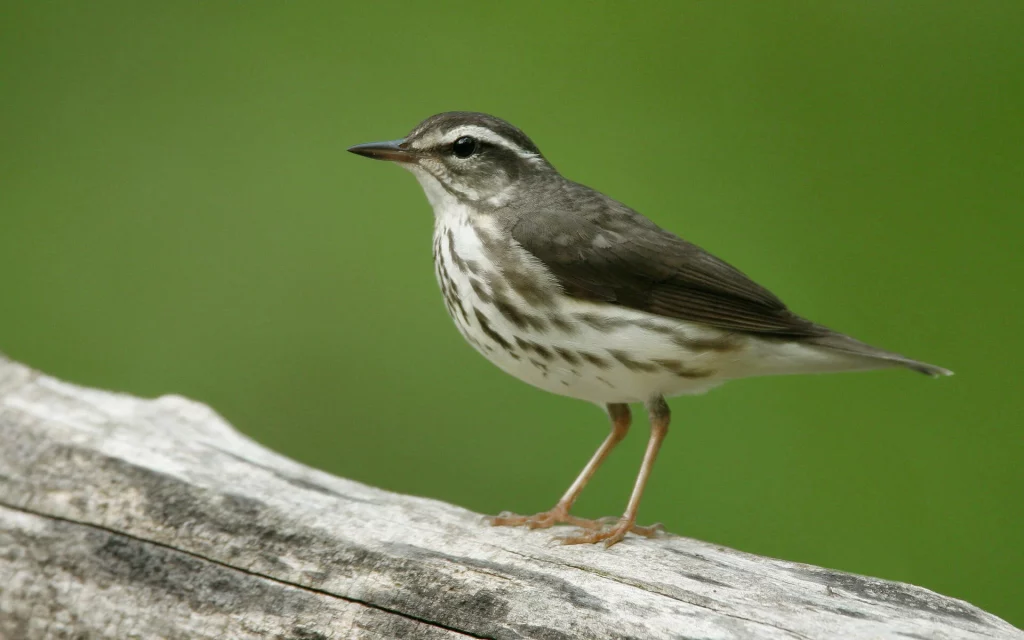
Louisiana Waterthrushes primarily breed in Arkansas from April to August, appearing in 4% of summer checklists. These small warblers showcase brown upperparts, white undersides with dark streaks, and prominent white eye-stripes. Louisiana Waterthrushes are typically found near fast-flowing streams and rivers, where they walk and bob along the water’s edge in search of aquatic insects. They migrate to Central and South America for winter.
29. Winter Wren
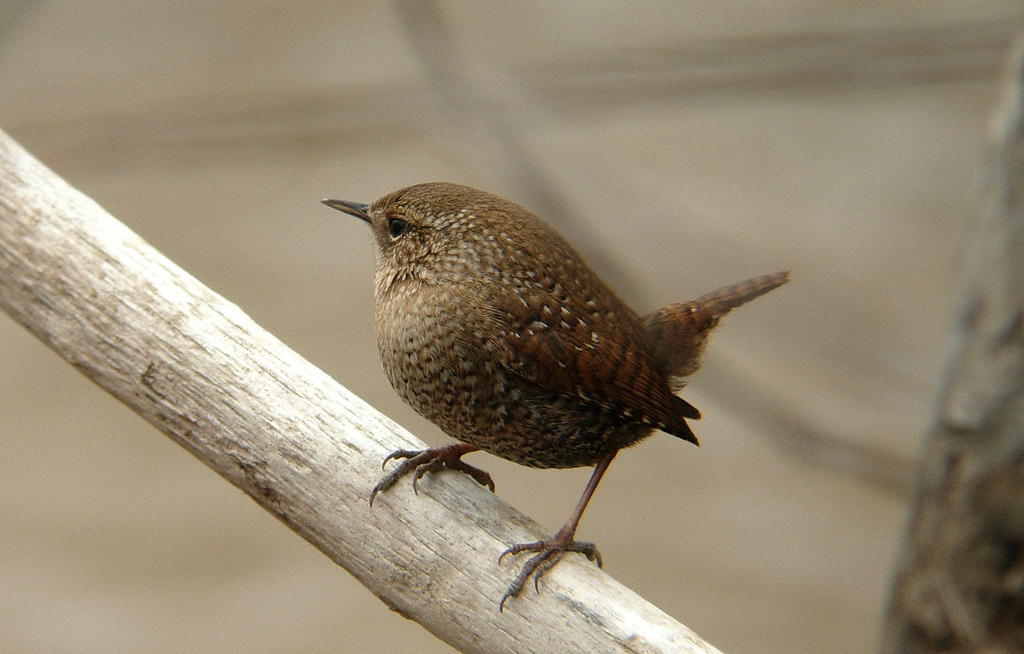
Winter Wrens spend the winter in Arkansas, appearing in 4% of winter checklists. They arrive as early as September and may stay until April. These small wrens have rich brown plumage, short tails often held upright, and prominent white eyebrow stripes. Winter Wrens are typically found in dense forests, thickets, and shrubby habitats, where they forage for insects and spiders.
30. Red-breasted Nuthatch
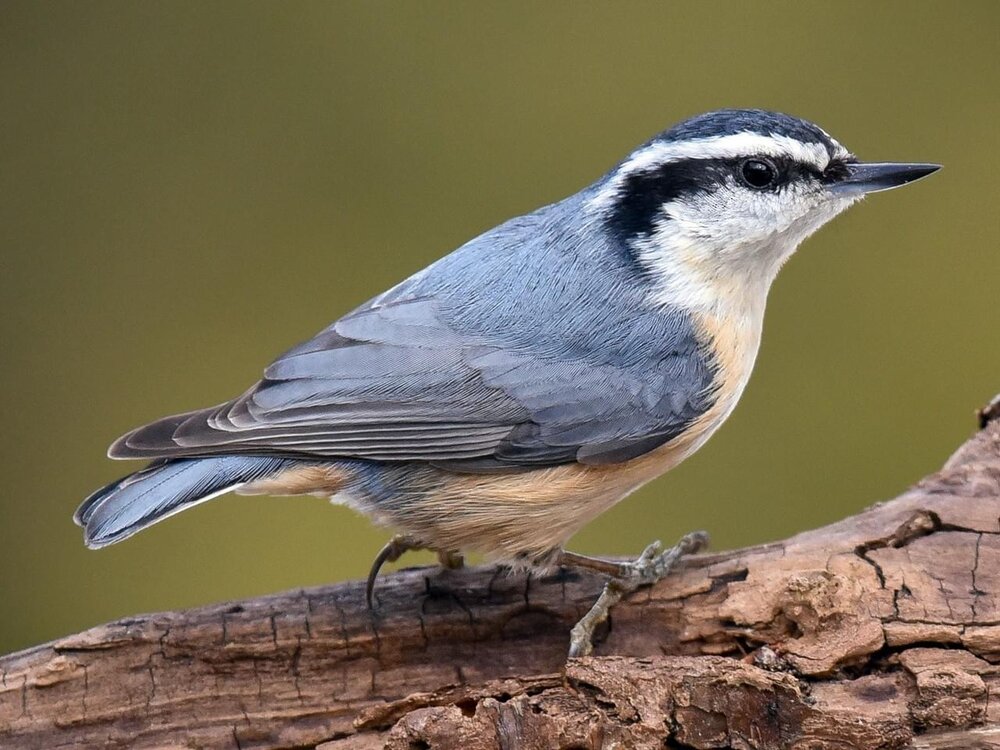
Red-breasted Nuthatches are observed in Arkansas primarily during winter, from September to May, appearing in 3% of winter checklists. These small, agile birds showcase blue-gray upperparts, reddish-brown underparts, and a distinctive black eyestripe. Red-breasted Nuthatches breed in coniferous forests across Canada and parts of the US, migrating south for winter. They can be found in pine and spruce forests, often seen climbing up and down tree trunks.
Please note that the presence and abundance of these bird species may vary depending on factors such as habitat, migration patterns, and individual variation.
